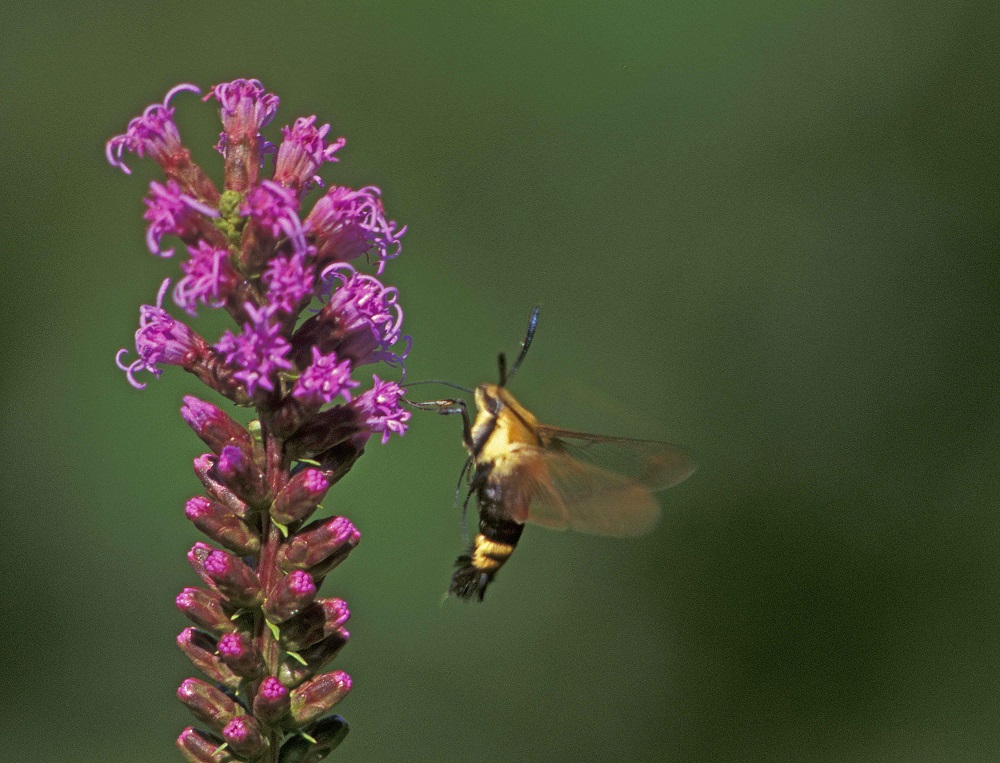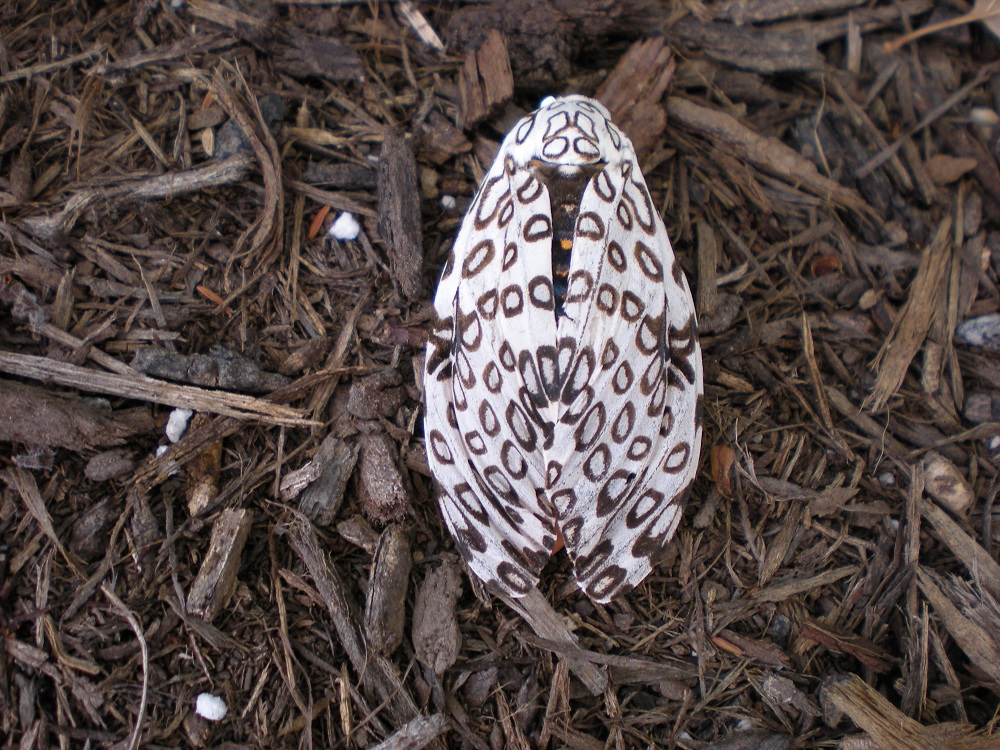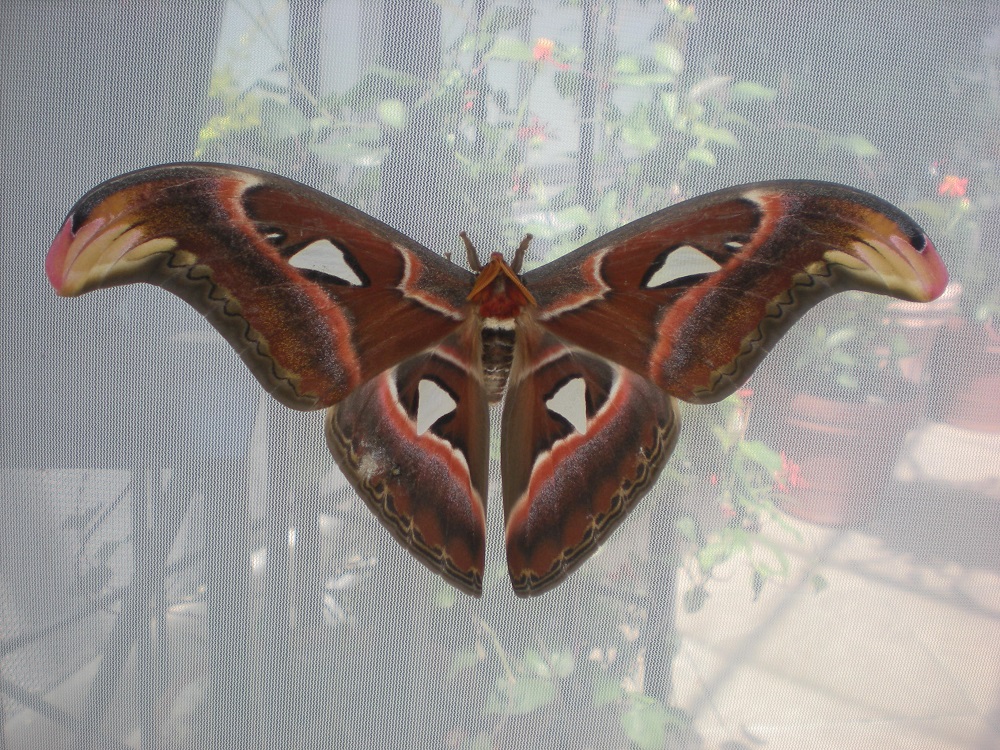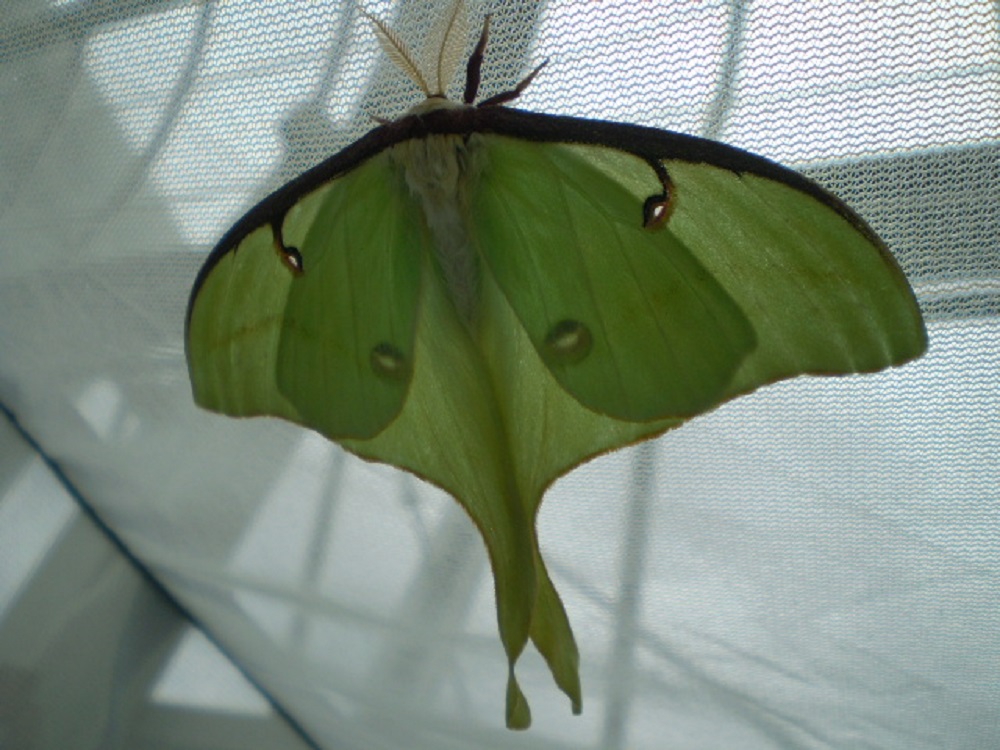National Moth Week
Today we begin a worldwide and week-long celebration of those somewhat elusive and undervalued insects known as moths. Possessors of natural beauty, their typical camouflage patterns and night-flying habits cause them to sometimes pass unnoticed. Though they are quite unlike the much showier butterflies, it is the oddities and quirks of moths that make them so fascinating.
So what are the differences between moths and butterflies?
- Most moths are nocturnal, which means they fly at night, while butterflies are out during the day.
- Moths tend to have camouflage colors and patterns on their wings. Some butterflies also have camouflage (like skippers), but they do tend to be more showy.
- Moths have large feathery antennae and their bodies are large and fuzzy. Butterflies have slimmer bodies and thin, clubbed antennae.
- Many moths do not eat anything and don’t even have mouths, while butterflies love nectar from flowers.
- Moths rest with their wings open to help them stay camouflaged, but butterflies rest with their wings closed to hide the bright colors.
Now that you know a bit more about moths, lets interview some of the local moth celebrities as well as the Atlas Moth who is a tropical visitor to our Butterflies LIVE! exhibit:
Atlas Moth
- As one of our tropical visitors, you have traveled far to be with us today. Where are you from?
- I am from the tropical forests of India, China, and south all the way to Indonesia.
- Your wings are quite stunning, tell us a bit about the patterns.
- I know, I’m quite fabulous! My name actually comes from the fact that the patterns on my wings resemble a map or atlas.
- Being a moth, you must have many predators. Tell us how you defend yourself.
- It’s quite ingenious, actually. If you take a look at the tips of my forewings you will see that they resemble the head of a snake. A potential predator takes one look and runs!
- There is one note of special distinction about you. Could you tell us about it?
- Gladly! I am actually one of the largest of all the moths and butterflies in the world. My wingspan can get between 10 and 12 inches in length.
Thank you so much for your time Atlas. Now lets move on to some of our local moth celebrities that you may see in your own backyard:
Luna Moth
- Thank you so much for being with us today, you seem a bit sleepy.
- *Yawn* Yes, I’m not typically awake during the day. Like most moths I fly at night. My name, Luna, means moon. I do resemble the moonlight, you know, and it helps me to navigate. That’s why I get distracted by electric lights so easily…
- As one of our local celebrities, I was wondering if you could tell us your favorite place to hang out.
- You can typically find me in forested areas all across the eastern United States.
- As to size, how do you rank?
- I am actually one of the larger moths in the United States. My wingspan can get up to 5 inches across.
- Tell us about the long tails on your wings.
- The tails on my wings help in distracting predators. My head is rather well hidden, so the predator goes after the tails instead, allowing me to make my escape.
Thank you for your time Luna, I’ll let you get back to sleep. Our next celebrity is a bit of an exception in the moth world and does not quite follow the norm.

Snowberry Clearwing Moth (Hemaris diffinis), one of many species of hummingbird moth. Photo courtesy of the US Forest Service. Photo by Tom Barnes.
Hummingbird Moth
- Good morning! You came in so fast I almost didn’t recognize you.
- Yes, quite right, I am very busy. So much to do! Most people actually mistake me for a small hummingbird because I look and sound just like one, hence my name hummingbird moth.
- You are a bit unique in the moth world. Can you tell us about it?
- Unlike many other moths, I drink nectar and fly during the day. Although sometimes I am also active at night. So much to do, you know.
- So where can people expect to see you?
- I can be found in flower gardens all over North America as well as Europe. Summer is when I am most active.
Well thank you all so much for your time! It has been splendid getting to know each of you.
Now that you have met some of these wonderful moths, it’s time to get out there and find some more! There are thousands of species of moths and each one is unique. You don’t have to go farther than your front porch or yard to spot one. Most moths are attracted to lights and will flock to them at night. You can also set up a sheet with a light behind it to attract them. They land on the sheet and you have a perfect photo opportunity!


